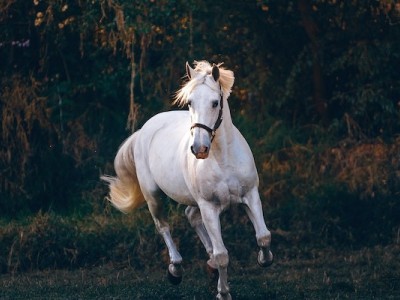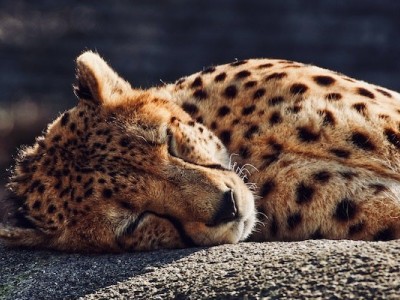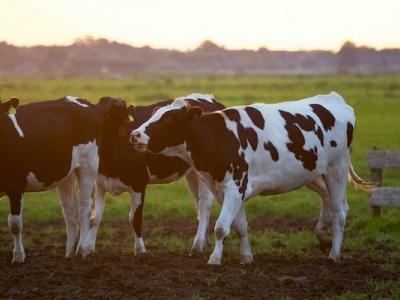
Community
 $0 raised of $2,000 goal
0.00%
$0 raised of $2,000 goal
0.00%
Environmental Conservation Project
by PATRICK MUSINGUZI
Created Apr 15, 2022 |
Uganda East Africa
- 0 Donations
- No deadline
- 5 Likes
KIBAALE NATURE CONSERVATION PROJECT PROJECT PROPOSAL PROJECT TITLE: NATURE CONSERVATION PROJECT BACKGROUND INFORMATION Kibaale Nature Conservation Project is found in Kibaale District which is part of the Kingdom of Bunyoro, one of the traditional monarchies in Uganda. The kingdom is coterminous with the Bunyoro sub-region. Kibaale District is part of an area known as the "Lost Counties”. The “Lost Counties” were included as a sub-national territorial element of Buganda. The administration of the Lost Counties as well as Bunyoro itself was modelled on the Buganda political system and under the leadership of Baganda chiefs. In a referendum held in November 1964, the residents in the two lost counties voted to return to the Kingdom of Bunyoro. THE ORGNATED PEOPLE OF KIBAALE: Kibaale has originated tribes which are Banyoro tribe, their culture are the same with other Ugandan culture, but mainly depend on Tobacco and Maize farming for their live hood, The Banyoros do depend on environmental conservation to live their lives. They usually prefer building just a simple house containing one room for parents and two rooms for separate boys and girls kids. The cooking place is always on an open hut outside. The houses are made using burnt bricks and woods from the forest. Now days Kibaale has attracted quite more than three different tribes from other villages due to its attractive nature and naturally fertile land. All tribes they participated in local tradition such as in agriculture system, animals keeping and marriage ceremonies. The population estimate at Kibaale is about 681,300 inhabitants. ATTRACTION: Kibaale have various attraction which are Kibaale national park, waterfalls, caves and scenic rocks and many others. PROBLEM STATEMENT. Kibaale Nature Conservation project is a newly established community based group, and it was established on 17/02/2019 by about five native people of Kibaale Village. The project was established following a research me and my fellow tour guides conducted on the wildlife, Natural resources and Human livelihood taken into consideration. Some villagers have been killed with Elephants, Lions and sometimes Crocodiles when they are in their daily routines to fetch firewood, charcoal, medicines herbs or woods for building their local houses! In Kibaale poor families would just go into the forest cut down trees, take them for building their huts and sell some for getting little income. It was very pity and sad when I heard that one of school mate named Henry Mbabazi, was one of the victim who lost his mother when she went to fetch some medicinal herbs to save life of her young daughter, but she was slaughtered by the Leopard and killed. The human activities in the forest had so far a great effect where by many trees were cut down and burnt due to human livelihood activities. There is so much to do with the nature, but Kibaale nature Conservation project is only aiming in mainly reforesting the trees on the land, and on another side to promote and support other community income generating activities so as to reduce pressures on dependence to forest directly. It wasn’t too many years ago that the world has been reported to have a global worming in its different natural features, but also the degradation activity brought by the population which needs to sustain their life like tree cutting for burning charcoal and fire wood, this was among the many reasons which make us to interested not only to show you visitors the natural features we have but also to collaborate in preventing them from deforestation by human life activities. Now, instead of seeing people cutting off the trees and others using the Hot Spring wonders of Kibaale as a swimming pool we want to renovate the place through cleaning, planting trees and provide education to the local surrounds to make sure that they know the importance of conserving the environment for the presents and features generations. There is a tremendous need, especially for high risk communities who lives along the wildlife corridor to educate them on not disturbing the nature. They should be trained and supported to engage in other good environmental friendly practices to generate their livelihood. By reducing dependence on the forest directly, our project believes that: Speed of Tree cutting and burning will then be slowed down, Number of reported deaths due to human wildlife conflict will be reduced, and Preservation of the nature will be possible there by leaving animals live happily without human interaction. How can the Dependence to Forest products be reduced: By introducing other means of modern cooking techniques such as gas cookers instead of charcoal or firewood, By supporting good bees keeping practices whereby income can be generated without disturbing the nature (forest or other living animals), To give farming education and little supports to encourage them to do farming, To conduct Training (our main target) to the community on nature conservation, Educating the community on Sustainable utilization of forest resources. COMMUNITY NEED ESTIMATIONS The area which surround the Kibaale forest reserve covers the total area of about 4 hectors and the place have the scarcity of 1,200 trees and up to now we have managed to initiate a tree nursery of about 400 trees with the remaining of 800 trees, Its due to this needs that we have decided as the Kibaale Nature Conservation Project to collaborate with the local community in the whole process of training on the importance of environmental conservation and planting 800 more trees which will help to compact the nature and the services provided by the place. There by encouraging them to start bee keeping and set aside places outside of the wildlife corridor where they can start agriculture activities. PROJECT GOAL To raise (Kibaale Nature Conservation Project) and community awareness about conservation and management of natural areas, for example our Hot spring land, Kibaale forest area and the wild life corridor. PROJECT ACTIVITIES • To recruit 30 community volunteers, and our members who will participate in the project implementation. • To inform the local community and the our members on the importance of having trees on and conserving our Hot spring land. • To plant 800 trees in three different phases. • To promote and encourage villagers to set aside areas for farming activities. • To develop and evaluate work plans for each volunteer and our work site • To organize (Kibaale Nature Conservation Project) and community awareness activities about weeds/ feral animals/ biodiversity to protect the planted trees. • To guide volunteer and our work in accordance with the organization’s Objectives AND goal as well as bush regeneration techniques and safe work practices • To obtain grant funding • To share information with other natural resource management organizations via reports, meetings, email networks and newsletters. PROJECT DESCRIPTION AND IMPLEMENTATION A workshop to be held soon after we have been funded to generate interest in the project and to discuss the importance of planting trees in our environment to secure our natural features. This workshop will provide information on the value of the project, project identification, collection and storage of species, tree planting and protection techniques, weed control, irrigation, and an example of a successful planting project on our land. In order to have a healthy tree in the future; the tree must be planted properly. And to perform it accordingly the following guidelines will be used to assist (Kibaale Nature Conservation Project) and community members in planting their trees properly. Prior to planting, remember to move the tree by the root ball or the container. Never grab it by the trunk, and the following steps will be applied • Digging the Hole: The planting hole should be at least twice the width of the root ball or container to encourage the roots to grow into the surrounding soil. The sides of the planting hole should be sloped. The hole should be no deeper then the root ball or container to prevent the tree from settling or being planted too deeply. • Tree Preparations: For a container tree; remove the container. For a balled and bur lapped (B&B) tree, remove the rope around the trunk and loosen the burlap. If the root flare is not visible, gently remove soil from the top of the ball until the tree is again at proper soil level. On both types of trees, check for large circling roots. If present, use pruning shears to make a clean cut. (Girdling roots will continue to grow in a circle, resulting in the death of the tree.). If the circling roots are fibrous, make 3 or 4 vertical slits into the sides of the root ball about 1 inch deep. On B&B trees, remove as much wire, rope, burlap and other materials as possible once the tree is in the hole. On both types of trees, remove all labels, tags, wire, and rope from trunk & branches to prevent the girdling as it grows. • Backfill: Use the same soil that was taken out of the hole. If the soil is very poor and appears to need Top soil, increase the hole size and sparingly mix in some local topsoil (avoid using potting soil, peat moss, and soil amendments). Remove stones and other debris. Fill the hole halfway with Backfill, then water. Finish filling the hole with the backfill and water again. Make sure to work the soil around the ball firmly to eliminate any air pockets. Also, make sure the tree is vertical and properly supported, but do not pack the soil around the trunk. • Mulch: The area around the tree should be mulched with woodchips, bark chips, or pine mulch. The mulch should be 3 to 4 inches thick and cover the entire planting area and beyond. The mulch needs to be placed in a donut or tire shape around the trunk of the tree. The mulch must be kept away from the trunk of the tree to keep insects away and prevent the trunk from being excessively wet. Mulch helps conserve soil moisture, reduces the competition from unwanted weeds, keeps lawn mowers and string trimmers from damaging the trunk, and moderates soil temperature extremes. Do not use sawdust, black plastic, or grass clippings as mulch. Do not make mulch volcanoes • Trunk Wraps: Research indicates there are no benefits from using trunk wraps and it may encourage damaging insects or diseases. • Staking: Staking is not necessary if the tree has a proper size root ball and has not been pruned too high. Stakes may help prevent lawnmowers and string trimmers from damaging the tree. If staking is needed for support, attach them so the tree has some sway. NEVER leave wires or straps on the tree for more than one growing season. • Fertilizing: Generally new trees do not need fertilizers. Using the wrong product could damage the already reduced root system. Fertilize the first year only if a specific problem develops. • Pruning: Prune only the branches that are dead, broken or severely deformed during the first growing season. Buds produce hormones that stimulate root growth, so keep the removal of buds to a minimum. • Timing for Planting: The best time of year to plant your tree is November through March. • Tree Size: Trees 2 inch caliper or less are recommended unless a larger size is justified. Smaller trees recover from transplant shock and commence with normal growth more quickly. • Watering: Trees must be watered every 7 days during the first three month period. SUMMARY OF KIBAALE NATURAL CONSERVATION PROJECT BENEFITS: • Employment to more than 30 local peoples • Conserving Kibaale`s natural Hot spring land and will help minimizing the Wildlife Human conflict along Kibaale wildlife corridor • It will help bringing awareness in conserving nature • Less people will go into the forest for life hopes, and hence reducing Human deaths so caused by Animals such as Elephants, Leopards, Lions and Big snacks! • Promoting and training community on creating other income generating sources • Abnormal environmental conservation project in which we put community first in letting participating in reforestation program while we also thinking about creating sources of alternative income for them, to feed their children and families. We will in near future also need to create a website for this Project program after its visions and objectives are ascertained to the desired communities and livelihoods of people. Hoping to hear from you Thanks very much for your time



Trending Campaign
Top Trending Campaigns

Animal
 by Chris Poole
No deadline
by Chris Poole
No deadline
Legal Defense Fund
We need funds for legal funds. Please help us. Thanks
$51,145
51.15%
raised of $100,000

Animal
 by Daniella Teixeira
No deadline
by Daniella Teixeira
No deadline
Help Our Dog
We are raising funds for our dog. Please donate us.
$50,030
142.94%
raised of $35,000

Animal
 by Justin Harnish
No deadline
by Justin Harnish
No deadline
The Mateo Vet
Want to join me in making a difference? I'm Dr. Mateo I've been a veterinarian f...
$49,990
499.90%
raised of $10,000
Featured Campaigns
Campaigns selected by our team

Animal
 by Chris Poole
No deadline
by Chris Poole
No deadline
Horse Farm Needed Funds
Horses farm needed funds. Please help us. Thank you
$45,340
90.68%
raised of $50,000

Animal
 by Lachlan Bailey
No deadline
by Lachlan Bailey
No deadline
Support Wildlife
We need urgent funds for wildlife.
$49,770
49.77%
raised of $100,000

Animal
 by Christian Frank
No deadline
by Christian Frank
No deadline
Help Feed the Animals During Lockdown
Help Feed the Animals During Lockdown
$45,440
908.80%
raised of $5,000
Related Campaigns
Take a look at other campaigns in the same category.

Community
 by Thecclfoundation
No deadline
by Thecclfoundation
No deadline
PAD THE GIRL CHILD PROJECT#MY PERIOD MY PRIDE
Pad the girl child project#My period my pride is an initative of The Covenant Ch...
$0
0.00%
raised of $10,000

Community
 by Ssempijja Ronald
No deadline
by Ssempijja Ronald
No deadline
Help Ronald share the love of Christ
John 3:16For God so loved the world, that he gave his only begotten son, that wh...
$0
0.00%
raised of $5,000

Community
 by Noman Bashir
No deadline
by Noman Bashir
No deadline
Feed and Providing Shelter
I want to help people around me and to start feeding them on permanent basis and...
$0
0.00%
raised of $10,000